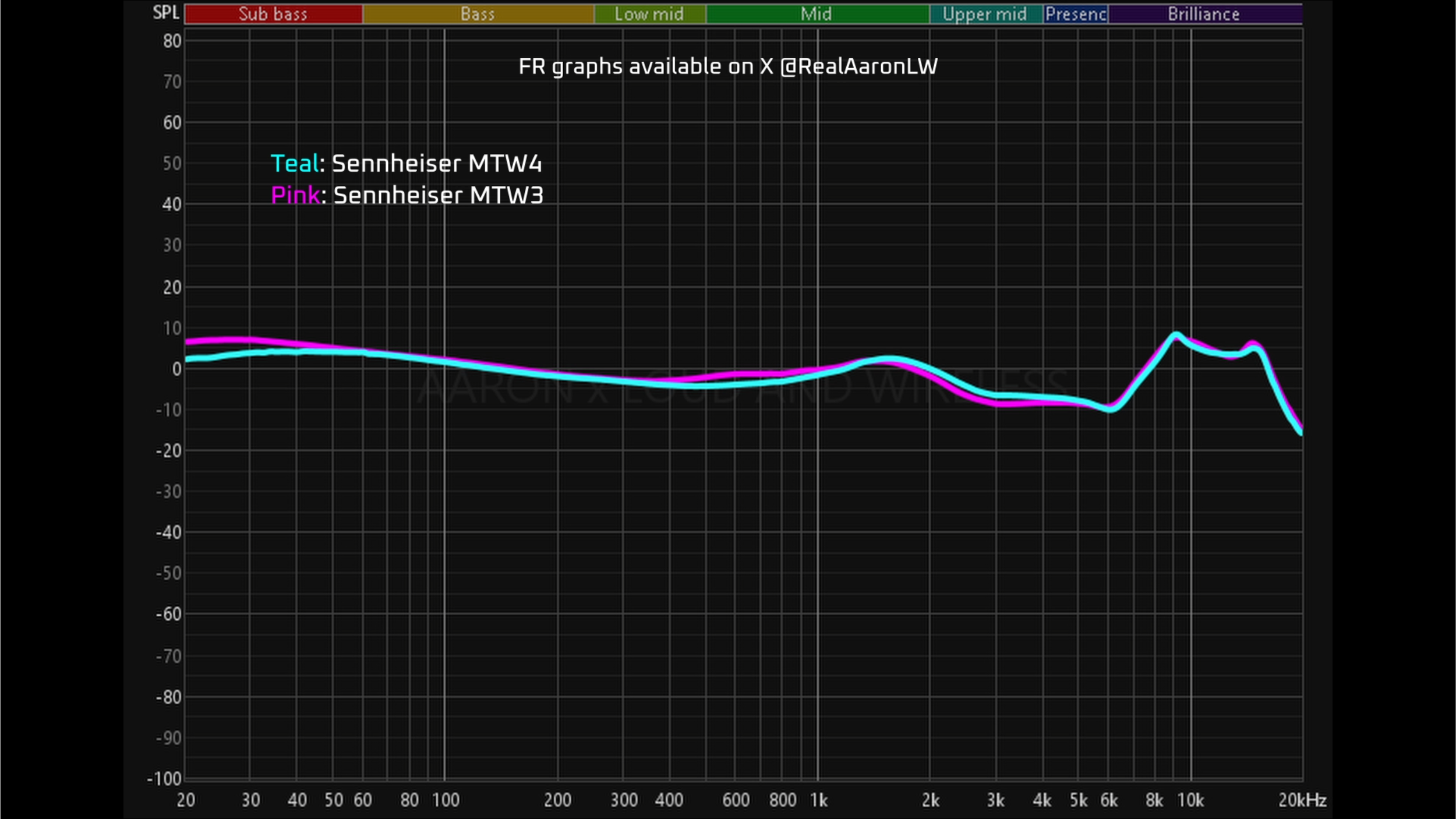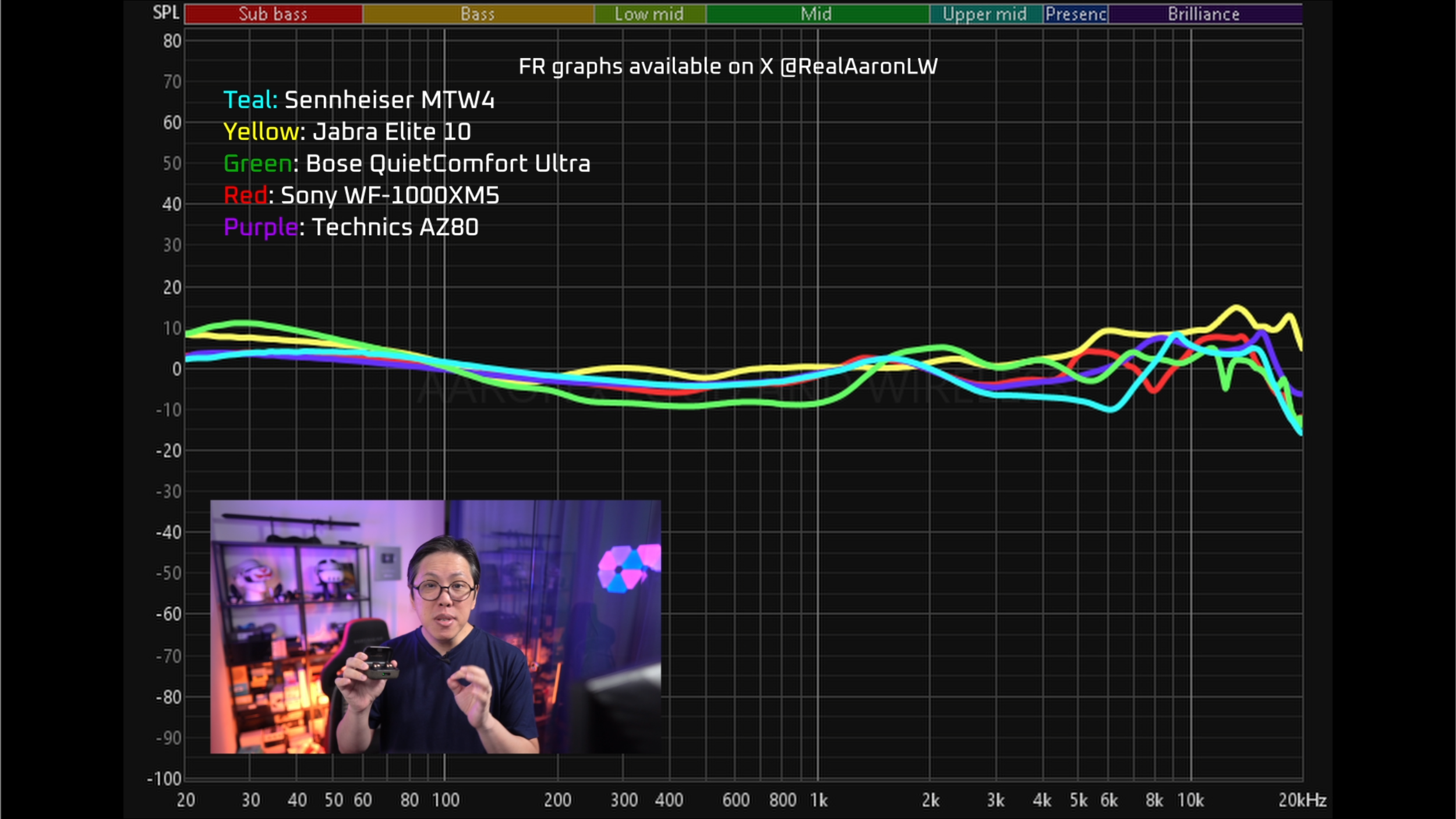Sennheiser MTW4 Review vs Sony WF-1000XM5 vs the BEST! (Bose, Technics, Jabra)
In the first half of this review I’m going to compare the performance of the Sennheiser Momentum True Wireless 4 to some of the most popular earbuds in the premium range, the Sony WF-1000XM5, Jabra Elite 10, Technics AZ80, the Bose QC Ultra, and of course, the MTW3. And in the second half, I’m going to talk about whether you should upgrade to the MTW4 from the MTW3, and its pros and cons vs each popular competitor. But before we get to the comparison, I think it’s worth talking about what has been improved here over the MTW3.
First, the battery. Sennheiser’s assured me that whatever happened with the MTW3 and its battery issues isn’t likely to happen with this new model because now they’re using a more reliable battery supplier, and they’ve also included certain settings designed to improve its battery lifespan like this one which limits the charge in the battery.
Otherwise the battery life per charge is similar to the MTW3. With ANC you can get around 5-6 hours per charge, and up to 24 hours with case. The biggest upgrade here is to its Bluetooth tech. These are specced to Qualcomm’s Snapdragon Sound standard, so with compatible devices like the Sony Xperia 5 V, you can stream over aptX Adaptive - a very good codec which allows streaming at high bitrates up to 24-Bit 48kHz, or in a low latency mode depending on the content.
Also, aptX Lossless will be added later through a firmware update. What’s also coming in an update is LC3 codec support and Auracast, which is the next generation of Bluetooth tech. It’s awesome, because Auracast allows you to stream from a single device to an unlimited number of Bluetooth earbuds. Watch this video for the possible use case scenarios.
And finally, Sennheiser’s also upgraded its RF antenna for better reliability. In actual usage, signal drops do happen in areas of busy traffic, but have only encountered this a few times.
Microphone Quality
In terms of mic quality, if we were to base it on the recording I made at the food court, it doesn’t seem like much of an upgrade over the MTW3. It seems to be just as good at background noise reduction. But comparing them to the other products in a controlled environment, in both quiet and noisy conditions, somehow my voice on the MTW4 doesn’t sound as crisp as its predecessor, and background noise reduction doesn’t seem as clean. But compared to the Sony and Bose, the MTW4s are still better at mic pickup in noisy conditions. Listen to the samples.
Active Noise Canceling
In terms of active noise canceling, I have used them outdoors and these are very effective especially at blocking the sound of voices. In this area, they seem to be more effective than its predecessor the MTW3, but I’m also noticing a bit more low frequency rumble getting through. Compared to the others like the XM5, the Elite 10 or the Bose, these aren’t as silent in general, but they are quieter than the Technics. That’s something you can hear in the samples.
What you don’t hear in the samples is that tiny bit of hiss when nothing’s playing. This is very common among noise cancelers, but some of the best noise cancelers like the Sony and Bose, don’t have that hiss, just silence.
Transparency Mode
The MTW4’s transparency mode is one of the best I’ve tried. Very little occlusion of my own voice as well as the sounds around me. So it felt pretty natural interacting with people while in Transparency mode. There’s also peak protection which is more on the sensitive side, so it blocks the sounds of barcode scanners, kids screaming, it will even block the sounds of your own coughing. Awesome. If there’s something about it I don’t quite like, it’s that theres some audible hissing at max transparency. So if it bothers you, just turn it down a little. No biggie.
Join to compare all sound quality, noise canceling, and microphone samples.
Sound Quality


In terms of sound quality, frequency sweeps reveal that its general signature is quite similar to the MTW3, except that it’s got a little less in the sub bass, and the mids have a bit more crispness rather than gravity. Comparing it to the others would show that its default tuning will sound much darker in the mids and highs than the Sonys, Bose, Jabras and Technics, so vocals don’t sound as crisp, and the soundstage lacks air and transient details. Indeed, a darker sound signature by default. Its track separation is very good, just as clean as the Sonys and Technics, and it’s similar to them in soundstaging too, but this also means the MTW4’s soundstage is not going to sound as open or spacious as the Jabras. Listen to the samples.
But what this graph doesn’t show is that the Sennheisers are very responsive to equalizing. It is possible to tweak it to sound much more lively and crisp, and bring out all that missing air and details in the soundstage. This can be done manually with the Smart Control app’s graphic EQ, or through the Sound Personalization feature. It also helps that its bass attack is already very punchy to begin with, so I didn’t have to correct that area.
Compared to the best earbuds…
So here are the MTW4’s pros and cons versus the competition. Let’s start by comparing them to the Sony WF-1000XM5.
Sennheiser MTW4 vs Sony WF-1000XM5
I am leaning more towards the Sonys because of their smaller, more compact case, better noise canceling, and in terms of features, the Sonys are a bit more feature rich with features like Speak to chat, DSEE extreme, and Sidetone toggle. Both will support LC3 as well as Auracast, but the Sonys also supports streaming over LDAC, a more common Hi-res audio codec. Although the Sennheisers will support aptX Lossless which has a higher bandwidth than LDAC, there aren’t many Android devices now that support that. So if you want to stream hi-res lossless audio now, the XM5 makes more sense. But if you’re using an iPhone for music, that won’t really matter because it only streams over the basic AAC. That being said, there are reasons to pick the Sennheisers. It’s easier to get a snug fit out of them, with the wing tips helping to secure them in place. Each gesture of their touch controls can be customized, so it’s possible to have both sides mirror each other. Can’t do that on the Sonys. And its call quality is better, especially in noisy places. If those are important to you, get the Sennheisers.
Sennheiser MTW4 vs Bose QC Ultra Earbuds
Comparing the MTW4 to the Bose is easy. If you need the best noise canceling in a pair of earbuds, get the QC Ultra. It’s dripping with silence. It’s also easier to use one sided, with access to all the controls because it’s got a dedicated swipe gesture for volume. The Bose also has spatial audio with head tracking, which spreads out the sound to make it more spacious, like in a cinema, and it works for any content on any device. But other than that, the MTW4s are a better choice. Its microphone pickup is better, and it’s got more features and custom options which lets you tweak its sound even more than the Bose, multipoint pairing, and wireless charging. While the Bose does support aptX Adaptive, it doesn’t do regular Aptx if your device doesn’t support aptX Adaptive. But, the MTW4 does. In short, the MTW4 feels like a more complete product.
Sennheiser MTW4 vs Technics EAH-AZ80
The biggest reason to pick the Technics AZ80 over the Sennheisers is its ability to multipoint up to 3 devices at the same time. It’s the only one I’ve tried that does this, so if it’s something you need, it’s a no brainer. The AZ80s also support LDAC streaming, and its case is smaller and more compact. Otherwise the Sennheisers are a great alternative because it’s more feature rich, has better noise canceling and is more future proof, since it will support Auracast.
Sennheiser MTW4 vs Jabra Elite 10
The Jabra Elite 10’s active noise canceling and call quality are better than the MTW4. I love how open and clean they sound even compared to popular hi-res earbuds, they’re very customizable and they have spatial audio with head tracking that works anywhere. These being wrapped in silicone also makes the Jabras more comfortable to wear for long stretches. Some people may also prefer the Elite 10 because button controls are easier to operate with gloves. On the other hand, the biggest reason to choose the MTW4, in my opinion, is that it supports better codecs. Even on the base aptX codec, the transmission will be superior on Android devices compared to the Jabra’s regular AAC. If your device supports aptX Adaptive or Lossless, even better. This means less compromise on bandwidth if you prefer listening to lossless audio files.
Sennheiser MTW4 vs Sennheiser MTW3
And finally, should you upgrade from the MTW3? The only thing that makes the MTW4 feel like a downgrade is the mic pickup. But right now there’s an ongoing issue with the MTW3 regarding its battery so it may be worth the upgrade after all because that issue has been rectified on the MTW4, with additional guardrails in place to extend its lifespan. Apart from that, its noise canceling is about the same give or take, its sound quality is similar, even the physical dimensions are the same. Features and settings are similar also, more or less, except that the MTW4 gives you more options about what codec to use. The only other big upgrades are aptX Lossless and Auracast which will be added in future firmware updates. In short, the MTW4 is like a more reliable, more future-proof, MTW3.5.
So that’s how the MTW4 compares to these competing products. If you want to check their latest prices, perhaps even purchase them, I’ve included links to their Amazon pages below.
Check latest price:
Sennheiser MTW4 - https://amzn.to/3ItesMI
Jabra Elite 10 - https://amzn.to/3EHIp9J
Sony WF-1000XM5 - https://amzn.to/3JGI1uN
Technics AZ80 - https://amzn.to/3JCNQcK
Bose QC Ultra Earbuds - https://amzn.to/49TSg9K
Sennheiser MTW3 - https://amzn.to/3zQXTHf
(Affiliate Links Disclosure)
When you make a purchase through the Affiliate Links on this site, the site earns a small commission at no cost to you. Thank you for your support!









